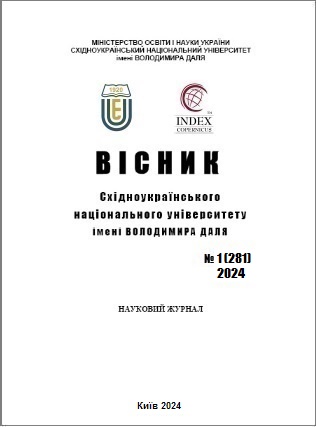Using Lean Six Sigma Methods in the SAFe framework risk management processes to enhance its efficiency
DOI:
https://doi.org/10.33216/1998-7927-2024-281-1-42-48Keywords:
hybrid risk management methods, risk management in agile environmentsAbstract
Risk management in IT projects with agilemethodologies is a challenging and critical task inmodern project management. The complexity of thisprocess demands new approaches and methods forimprovement. This study explores key Lean Six Sigmaprinciples like defining process importance, measuringefficiency, analyzing cause-and-effect, improvingprocesses, and controlling quality, and their adaptationto optimize risk management processes for agile projectsthrough Lean Six Sigma integration into the Scaled AgileFramework (SAFe). It demonstrates that traditional riskmanagement methods are too rigid and not sufficientlyadaptable to the fast changed IT environment.The researchshows how Lean Six Sigma tools canbe used for risk identification, analysis, response, andmonitoring, thus enhancing project managementefficiency and reducing failure rates. It offers practicalrecommendations for incorporating these tools intoSAFe, emphasizing the importance of formalizedprocesses for risk management to achieve higher projectmanagement efficiency and flexibility. The integration ofLean Six Sigma into SAFe significantly optimizes riskmanagement processes, improving understanding andcontrol over potential risks, leading to minimized losses,enhanced product quality, and meeting customerexpectations. In the article, there are given a method ofbuilding dependency within these two methods Lean SixSigma and SAFe and explained the future possibilities ofusing them on real-world projects.This could bring a lotof benefits for teams who are using this approach.
The findings highlight the importance of asystematic approach to risk management, includingformalized processes for risk identification, analysis,response, and monitoring, which not only minimizespotential risks but also aids in cost optimization, qualityimprovement, and customer satisfaction. The benefits ofintegrating Lean Six Sigma into SAFe for developing amore effective and adaptive risk management approachare emphasized, underlining its critical importance forIT project success in the modernworld.
References
1. Putta Abheeshta Why Do Organizations AdoptAgile Scaling Frameworks? A Survey ofPractitioners. In Proceedings of the 15th ACM /IEEE International Symposium on Empirical Software Engineering and Measurement [Conference]. - New York : Association for Computing Machinery, 2021. P. 1-12,https://doi.org/10.1145/3475716.3475788.
2. Syamil A. Enhancing Quality across Industries: ASystematic Literature Review on the Impact of SixSigma [Journal] // Global Business and FinanceReview. 2023. 7 : Vol. 28. Р. 59-74.DOI: 10.17549/gbfr.2023.28.7.59.
3. Schön E., Radtke D., Jordan C. Improving RiskManagement in a Scaled Agile EnvironmentLecture Notes in Business Information Processing,2020. Р. 132-141. DOI: 10.1007/978-3-030-49392-9_9.
4. S.V. Shrivastava and U. Rathod Categorization ofrisk factors for distributed agile projects //Information and Software Technology. 2015. Vol.58. Р. 373- 87. DOI: 10.1016/j.infsof.2014.07.007.
5. Tavares B.G., Da Silva C.E.S. and A.D. De SouzaPractices to Improve Risk Management in AgileProjects // International Journal of SoftwareEngineering and Knowledge Engineering. 2019. 3: Vol. 29. P. 165-176.DOI: 10.1142/S0218194019500165.
6. Moran A. Agile risk management [Book Section] // SpringerBriefs in Computer Science. 2014.
7. Tavares B.G. Da Silva C.E.S., de Souza A.D. Riskmanagement analysis in Scrum software projects //International Transactions in Operational Research. 2019. 5 : Vol. 26. Р. 1884-1905.DOI: 10.1111/itor.12401.
8. Albadarneh A. Albadarneh I., Qusef A. Riskmanagement in Agile software development: Acomparative study IEEE Jordan Conference onApplied Electrical Engineering and ComputingTechnologies, AEECT 2015, 2015.DOI: 10.1109/AEECT.2015.7360573.
9. Lopes S., Gratãode Souza, R.,Contessoto A., Luizde Oliveira, A., Braga, R A Risk ManagementFramework for Scrum Projects 23rd InternationalConference on Enterprise Information Systems(ICEIS2021), 2019. Vol. 2.DOI: 10.5220/0010448300300040.
10. Afshari M. and Gandomani T.J. A novel riskmanagement model in the Scrum and extremeprogramming hybrid methodology // InternationalJournal of Electrical and Computer Engineering. -2022. 3 : Vol. 12. Р. 2911-2921.DOI: 10.11591/ijece.v12i3.pp2911-2921.
11. Barrera García A., Feitó Cespón M and R. CespónCastro Six sigma and risk management applied tometrology in energy sector companies //Universidad y Sociedad. 2022. 5 : Vol. 14. Р. 215-224.
12. Buganová K and Šimíčková J Risk management intraditional and agile project management //Transportation Research Procedia. 2019. Р. 986 -993, DOI: 10.1016/j.trpro.2019.07.138.
13. Strang K.D. How lean six sigma risk managementwas used at a clean energy plant // Global Risk andContingency Management Research in Times of Crisis. 2022.DOI: https://doi.org/10.33216/1998-7927-2023-280-4-47-54

